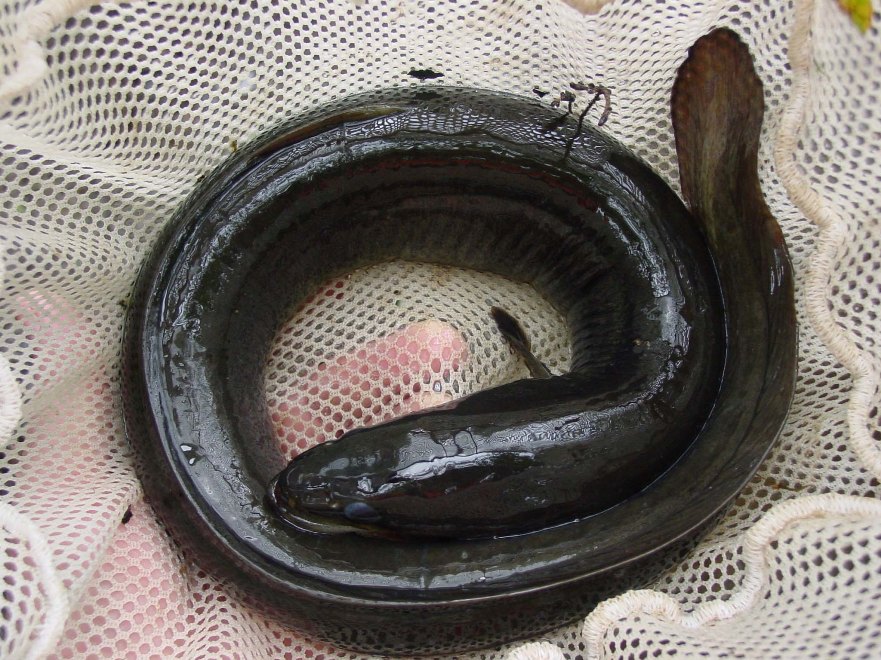
Eel Mystery Deepens with Shark Chow-Down

Nobody knows exactly how American eels make it to the Sargasso Sea, a mysterious expanse of flotsam-ridden waters in the middle of the Atlantic Ocean where the animals breed.
But a recent study to chart the migration of these enigmatic eels only deepened the mystery, when six of the eight eels tracked with satellite tags were eaten by sharks.
Soon after the eels were tagged in Gulf of St. Lawrence, all eight devices were found floating on the surface of the water suggesting the animals had met an untimely end. The tags, which record depth and temperature, revealed that before surfacing the devices had suddenly entered an environment much warmer than the gulf's frigid waters.
Further analysis found that these conditions could be encountered only one way: inside the body of a porbeagle shark, according to a release from Dalhousie University in Halifax, Nova Scotia, Canada, where some of the study authors work.
The study, detailed in the online journal PLOS ONE, suggests that efforts to conserve eels, whose populations have massively declined in recent decades, could be confounded by predation by porbeagle sharks. These sharks were one of the species that were themselves voted to be protected under the Convention on International Trade in Endangered Species (CITES) earlier this week.
"Both species are in trouble, and measures to conserve one may well be at odds with efforts to protect the other," said Julian Dodson, a researcher a Laval University in Quebec City and study author, in the statement. "What we really need now are studies to quantify just how important eels are in the diets of sharks and just what impact shark predation has on eel abundance."
Eels breed in the Sargasso Sea but return to freshwater streams as adults, making them vulnerable to pollution, urban development and the construction of dams.
Sign up for the Live Science daily newsletter now
Get the world’s most fascinating discoveries delivered straight to your inbox.
"We could hope that there will be increased pressure to protect eels in fresh water, particularly during downstream migration through power dams," said study author Mélanie Beguer-Pon, also a Laval researcher, in the statement. "We can't do anything about shark predation, but we can limit mortality in turbines."
An additional 113 adult eels were fitted with simpler acoustic tags, which can be detected by receivers moored in the ocean. The study found that only four of these eels made it out of the Gulf of St. Lawrence into the Atlantic Ocean, according to the release. Many of these eels were also likely eaten by porbeagle sharks, the statement said.
Email Douglas Main or follow him @Douglas_Main. Follow us @OAPlanet, Facebook or Google+. Original article on LiveScience's OurAmazingPlanet.










